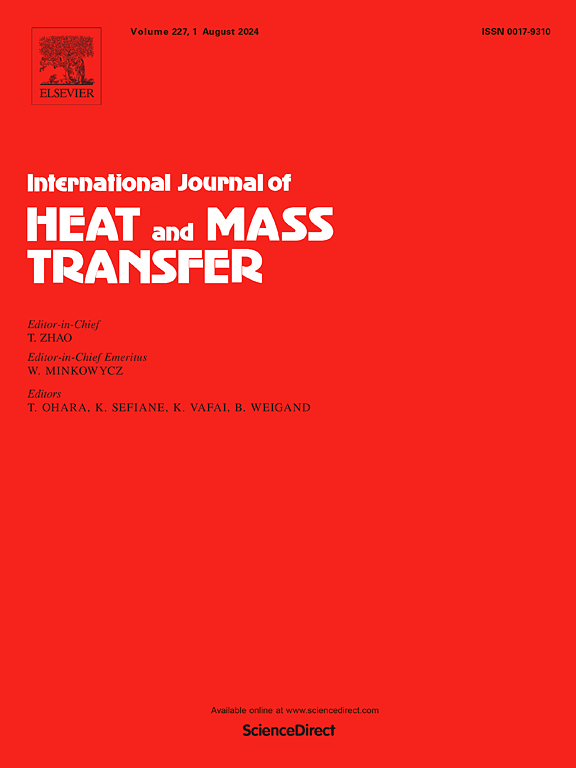From concept to optimization: Advancing passive microfluidic fuel cells through electrode-rib-channel innovations
IF 5
2区 工程技术
Q1 ENGINEERING, MECHANICAL
International Journal of Heat and Mass Transfer
Pub Date : 2025-02-12
DOI:10.1016/j.ijheatmasstransfer.2025.126808
引用次数: 0
Abstract
Passive microfluidic fuel cells, operated with methanol and air, are novel energy conversion devices, with low pollution, high portability, and relatively low cost, to debate the increasing energy demand and environmental concerns. During operation, the cell's structure plays a crucial role in determining the ohmic and concentration losses, which are closely related with the cell performance. In this study, a numerical model was developed to investigate the performance of a passive microfluidic fuel cell, focusing on variations in three structural components: electrodes, ribs, and flow channels. Our findings demonstrated that optimal designs in each category notably enhanced the cell performance. Specifically, compared to the base case without modification, using 6 trapezoidal electrodes increased the current and power densities by 20.62 mA cm−2 and 1.89 mW cm−2, respectively. Additionally, the employment of 3 triangular ribs enhanced the densities by 2.5 mA cm−2 and 0.35 mW cm−2, respectively. Furthermore, optimizing wave-shaped channels, with an amplitude of 0.5, a period of 3, and a phase of 0, resulted in increases of 3.55 mA cm−2 and 0.4 mW cm−2 in current and power densities, respectively. Finally, the optimization of three distinct structural categories was integrated and conducted using response surface methodology (RSM). This comprehensive optimization significantly reduced concentration and ohmic losses by decreasing ion transport resistance, thereby enhancing the overall cell performance. Under the optimal structural parameters, the microfluidic fuel cell achieved current and power densities of 52.44 mA cm−2 and 6.21 mW cm−2, respectively, which represent increases of 15.56 % and 12.12 % over those achieved with single-category optimization.

求助全文
约1分钟内获得全文
求助全文
来源期刊
CiteScore
10.30
自引率
13.50%
发文量
1319
审稿时长
41 days
期刊介绍:
International Journal of Heat and Mass Transfer is the vehicle for the exchange of basic ideas in heat and mass transfer between research workers and engineers throughout the world. It focuses on both analytical and experimental research, with an emphasis on contributions which increase the basic understanding of transfer processes and their application to engineering problems.
Topics include:
-New methods of measuring and/or correlating transport-property data
-Energy engineering
-Environmental applications of heat and/or mass transfer

 求助内容:
求助内容: 应助结果提醒方式:
应助结果提醒方式:


